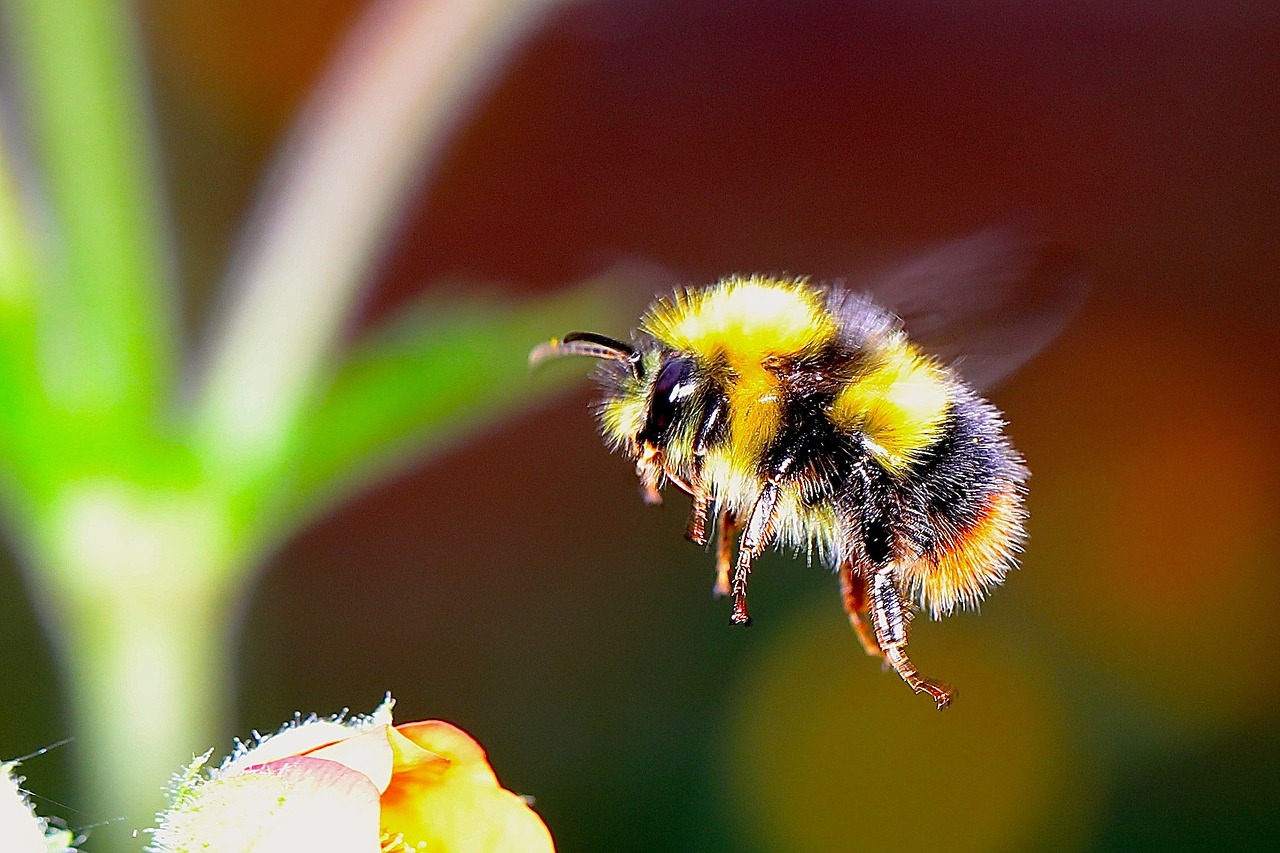The myth that bumblebees cannot fly likely originated from an understanding of aerodynamics grounded in fixed-wing flight, which is the kind of flight we’re most familiar with in human-made aircraft. For an airplane to fly, the shape and size of the wings relative to the body mass are crucial. Early attempts to apply these principles to bumblebees led to the erroneous conclusion that they should not be able to generate enough lift to get off the ground due to their relatively small wings and large body mass.
However, insect flight, including that of the bumblebee, doesn’t rely on the same principles as fixed-wing flight. Instead, bumblebees and many other insects use an entirely different mechanism called flapping-wing flight. In flapping-wing flight, the insect moves its wings back and forth rapidly, at approximately 200 beats per second for a bumblebee, which is a much higher frequency than birds or bats.
This flapping motion isn’t just up and down, but also involves a rotation of the wing such that the leading edge is up for half the stroke and down for the other half. This allows the bumblebee to generate lift on both the upstroke and the downstroke. The wing also changes its angle throughout the stroke to optimize the amount of lift generated. This complex motion is more difficult to analyze than simple fixed-wing aerodynamics, which contributed to the confusion leading to the myth.
Furthermore, a 2005 study published in the journal “Experiments in Fluids” showed that bumblebees use something called “dynamic stall” to generate additional lift. When the wing rapidly changes direction at the end of a stroke, it leaves behind a vortex of swirling air. This vortex interacts with the wing during the next stroke to increase the lift beyond what would be expected from a static wing shape.
In essence, the bumblebee is using a combination of high-frequency flapping, complex wing motion, and vortex generation to lift its body into the air. This combination is more complicated than the fixed-wing flight most of us are familiar with, but it is extremely effective for the bumblebee and many other insects.
Hence, the myth that bumblebees shouldn’t be able to fly is based on a misunderstanding of how different kinds of flight work. Bumblebees fly just fine, but they do it in a different way than what we may expect based on our experiences with human-made aircraft and larger flying animals.






